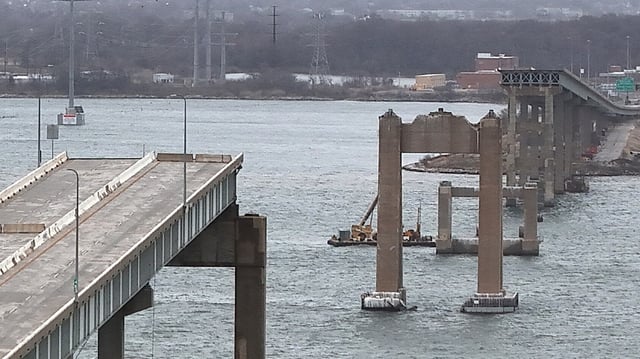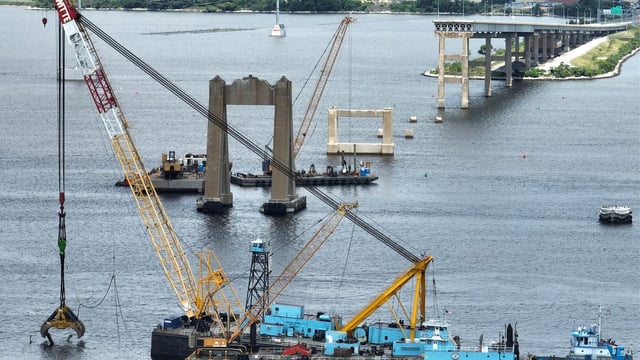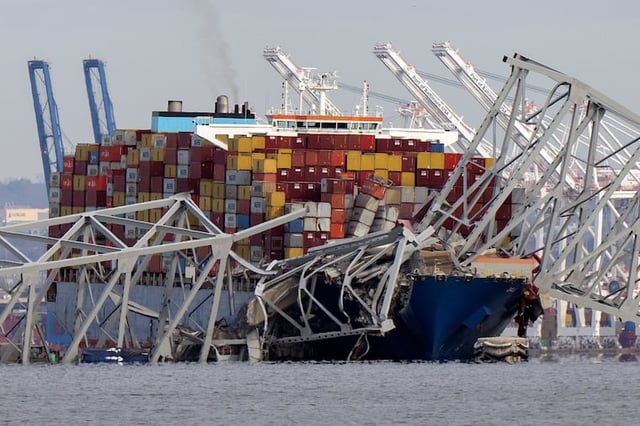Overview
- The Francis Scott Key Bridge in Baltimore collapsed in March 2024 after being struck by a cargo ship, highlighting the vulnerability of aging infrastructure to modern shipping traffic.
- Johns Hopkins researchers have identified 20 U.S. bridges at significant risk of ship collisions, with the Huey P. Long Bridge in Louisiana deemed the most vulnerable, expecting a collision every 17 years.
- The study attributes increased risks to larger ships and higher traffic levels compared to when most bridges were originally constructed, with some bridges facing a collision likelihood of once every few decades.
- Recommendations include retrofitting bridges with protective barriers, such as structural dolphins, and conducting vulnerability assessments to prevent future disasters.
- Baltimore residents continue to face disruptions from the Key Bridge collapse, expressing skepticism about the government's 2028 reconstruction timeline.



